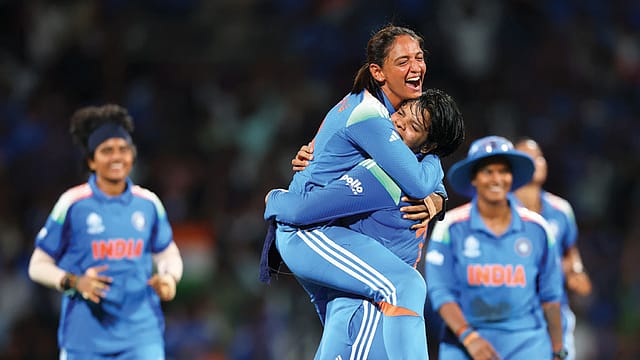Cricket: Daring and Winning

INDIA’S WOMEN’S World Cup win has changed the sport forever. That’s what we have been hearing over the past few days. When we say this, what exactly do we mean? What are the markers of change? Is it about perception, or are there quantifiable markers of this change? For example, do we see corporate support for the sport going up? Will the brand attract more eyeballs in the near future? Will there be more respect and more credibility for the players?
The first thing that we need to do is differentiate between men’s and women’s cricket. The more we compare the two, the more we make the mistake of imposing men’s cricket markers on the women’s game, which in itself is a fundamentally flawed approach. From the pace of the sport to the style of play and the size of the boundaries, everything in the women’s game is different. If we extrapolate markers from the men’s game, we will never be able to appreciate the women’s game for what it is.
What I want to say here is simple — women’s cricket should aspire to be India’s second sport after the men’s game. It is a separate sport and not merely an extension of the men’s game. The World Cup has given it an identity of its own, and that’s what we in India need to build on. Take cricket gear as an example. It is still the case that women use men’s gloves, pads , and guards. It is assumed that both will have the same equipment or need the same gear. It is also assumed that the boundaries for women’s matches are shorter because the reference point is always the men’s game. Do we take the biological index into account when we make these comparisons?
2025 In Review
12 Dec 2025 - Vol 04 | Issue 51
Words and scenes in retrospect
Let’s take the case of pay parity. For the longest time, the disparity was huge. To an extent, the disparity still exists. While the women get equal pay for match appearances, the value of central contracts for men and women is still very different. While it is `7 crore for men, it is `50 lakh for women. I am conscious that things can’t change overnight, and I am also conscious that the BCCI has been doing a very good job in the last few years. What I wish to say here is that the World Cup win has laid the foundation for us to build the superstructure.
The other question that is doing the rounds is whether this euphoria is performance-related. Is it because of the World Cup win that we see a groundswell of support? There is another World Cup in the UK nine months down the line. Suppose the women’s team doesn’t win — and suppose they don’t make the final — will this support die down? Is it strictly performance-related? That’s where the men’s game stands out. Between 2013 and 2024, the men’s team did not win a single ICC tournament , and yet the brand value of the men’s game kept on increasing year-on-year.
The macro change from the World Cup is that no woman will ever again be stopped from picking up a bat or ball. No one will be told off if they wish to pursue a career in sport. No one will be asked to confine themselves to their home and not pursue physical activity. Things are expected to open up, and with more and more women playing the sport, the talent pool is also expected to expand. There is a very common saying in sport that if you put more bodies on the start line, winning more medals is just a matter of time. That’s why it is essential that we have more and more athletes qualify for the Olympics. If we have many more who make the qualification cut, winning more medals will automatically follow. The very same applies to the women’s game. If more and more girls play the sport and want to make a career of it, the talent pool will get better. The selectors will have a far wider range of players to choose from, and the competition for places will also go up. In every sense, the World Cup win is an opportunity. It is of paramount importance that we use it well to bring about a revolution.
